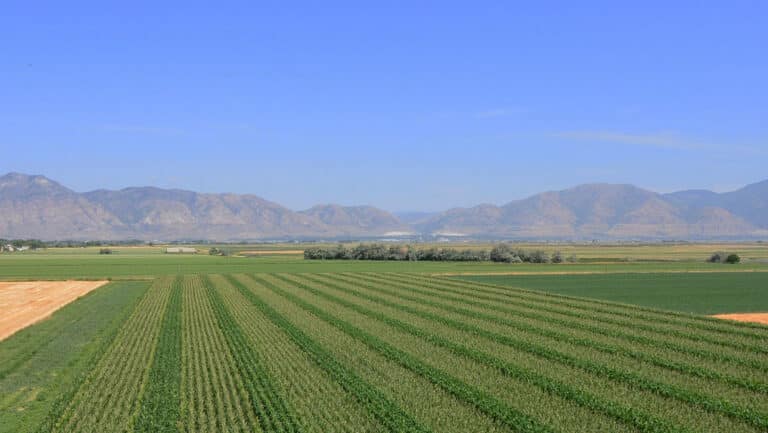Agricultural Commodity Prices and Market Outlook in 2024
Lower agricultural commodity prices are contributing to a decline in net farm income in 2024.
Agriculture commodity prices are on the decline—with a three percent decrease forecasted in 2023. This, combined with higher input costs, fewer government payments, and rising interest rates, is leading to a drop in net farm income. In 2024, net farm income is predicted to follow a similar pattern of decline.
“I think what worked for you in 2023, has a high probability of working in 2024,” said Al Kluis, managing director of Kluis Commodity Advisors.
In this article, we’ll share which major agricultural commodities have strong, fair, and challenging outlooks in 2024 to help you with your agribusiness planning.
Agricultural Commodities with Challenging Price Outlooks
Corn
Corn demand is down in the US, leading to lower usage and increased stocks. Combined with strong production domestically and globally, corn prices are declining—projected to be $4.80 in 2024.
Soybeans
Soybean plantings are predicted to fall by nearly three million acres in the 2023/2024 marketing year. A competitive market is placing downward pressure on soybean prices. Soybeans are projected at $12.75 in 2024, dropping by five cents since December 2023.
Wheat
Planted acreage of wheat was down last year, but is expected to stabilize in the 2023/24 marketing year. There is legitimate cause for concern in the wheat market. After disruptions from COVID and the Russia-Ukraine conflict, global supplies of wheat are increasing, and prices are predicted to fall to $7.20 per bushel in 2023/24.
Cotton
Cotton supply is up, primarily due to carryover stock from the previous marketing period. This high supply is predicted to cause a decrease in cotton prices, with most outlooks forecasting anywhere between a three and 10 percent decline in 2024.
Dairy
Increased production, stagnating herd numbers, and weak net exports have all contributed to a decline in dairy prices. Milk is predicted to see a 15 to 20 percent decline in price over the next two years.
Poultry and Poultry Products
After experiencing record high prices in 2022, boiler prices have started to decline. Prices fell in 2023 and high ending stocks are predicted to cause the price to further decline in 2024.
Agricultural Commodities with Fair Price Outlooks
Non-Citrus Fruit
Exports for non-citrus fruit fell below the five-year average in 2023, and the trend is expected to continue into 2024. Imports of non-citrus fruit are increasing, and the price of fruit may see regional differences because of this. However, non-citrus fruit commodity prices are expected to stagnate nationally in 2024.
Citrus
Citrus production reached a 50-year low in 2023, mostly due to citrus greening disease, also known as blight, combined with several hurricanes hitting Florida. Despite this challenging start, citrus production is predicted to increase in 2024 by 30 percent.
Nuts
Nut production was down in 2023 due to several weather shocks and a decline in pollinators. Over the past decade, the price of nuts has been declining on average, and high production levels will likely keep prices down in 2024. Despite this, exports trends have a strong outlook, which may give some farmers relief.
Hogs
For the last several years, U.S. pork has faced dwindling domestic demand and a subsequent softening of prices. However, many experts have observed a shift in market demand from younger generations and a notable increase in anticipated export demand from China. This combination could increase the price of hogs in 2024.
Agricultural Commodities with Strong Price Outlooks
Vegetables
During the pandemic, the resilience of frozen vegetables kept prices stable. In 2023, there seemed to be a shift toward more vegetable consumption nationally. Vegetables production is predicted to increase at a rate of 3.3 percent to keep up with this demand, and prices are predicted to grow by five percent.
Melons
Melons had a good year in 2023, and despite greater worldwide production and increased competition from abroad, revenue and production are predicted to continue to grow in 2024, with increases of 3.2 and 1.5 percent respectively.
Timber
Timber is steadily recovering from inflationary stress caused by the pandemic. Timber prices rose 11 percent over the course of 2023. In 2024, prices are healthy, projected to approach $600 per thousand board feet in 2024.
Cattle and Calves
After dwindling herd numbers shrunk supply last year, beef producers saw sharp prices increases. These high prices are expected to hold into 2024, even as production increases. Experts are optimistic that cattle numbers could fully recover to previous levels by 2025.
Unlock More Agricultural Commodity Price Insights for U.S. Agriculture
The agriculture market is always changing, and unpredictable events like droughts, foreign conflict, and policy changes can push farmers to pivot strategies with little notice. Learn how you can prepare for challenges in the coming year and grow your operation’s financial resilience by downloading the 2024 Economic Outlook for U.S. Agriculture. Inside, you’ll find insights from AgAmerica’s research team about the year’s biggest challenges for agriculture.






